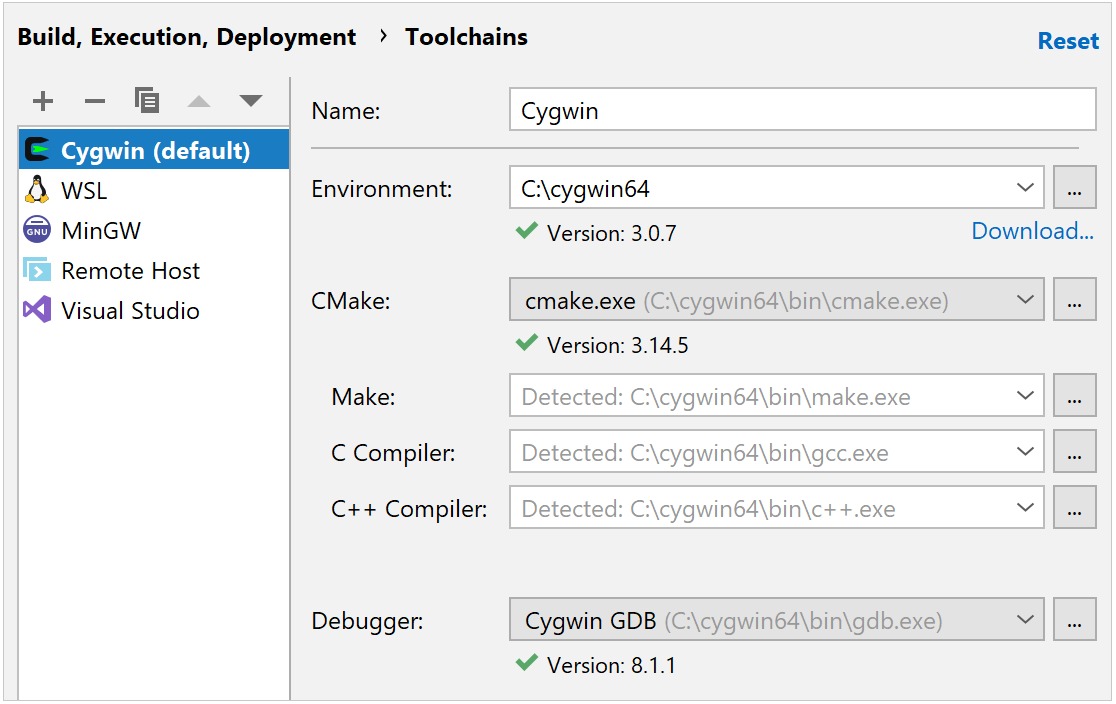


To avoid reloading the project manually, configure auto-reload.Īt this point, both of the packages are included in CLion project model and you can work with them as usual. Make sure to reload the compilation database (press Ctrl+Shift+O or call Tools | Compilation Database | Reload Compilation Database Project form the main menu). Next time use the button in the Run tool window to rebuild the workspace again.Ĭheck that compile_commands.json has been regenerated and now includes the entities for both packages: Go to Settings / Preferences | Tools | External Tools and click to add a new tool.Ĭonfigure the tool to perform the same colcon build command as we used when building from the command line:Īfter saving the tool, call it via Tools | External Tools on the main menu.Ĭheck the results in the Run tool window: To (re)build the entire workspace, we will configure an external tool for colcon build and call it without leaving CLion. Ros2 pkg create -build-type ament_cmake cpp_srvcli -dependencies rclcpp example_interfacesįollow the steps to get the source files, CMakeLists.txt, and package.xml, up until building. To illustrate this, we’ll take an example of adding a Simple service and client package to our dev_ws workspace. Now let’s take a look at how we can add a new package and rebuild the entire workspace in CLion. In our case, it is MSVC LLDB.Īnother alternative for debugging is to launch a package outside CLion and then attach the debugger to a running process. All the CLion debugging and dynamic analysis features will be available for the workspace code.ĬLion will take the debugger from target's toolchain. See Debug as root for more information.Īfter saving the configuration, it is ready to be Run or Debugged. Select the Run with Administrator privileges checkbox. Set the Executable to the actual package binary. Modify the configuration for build to the following: Open the Edit Configurations dialog again. Make sure to reload it or configure auto-reload. If you have added or removed files in the package, the compilation database will be regenerated accordingly. Alternatively, call Build | Build 'Build cpp_pubsub' from the main menu. Select the configuration in the toolbar switcher:Ĭlick the hammer icon or press Ctrl + F9. In the configuration settings, select the Target and make sure to remove Build from the Before launch area. Go to Run | Edit Configurations, click and select Custom Build Application. To be able to build and then launch the target we have for the package, we need to create a corresponding configuration. Create a run/debug configuration for the custom build target Set the Working directory to the package build directory.ģ. In the Program field, select the newly created script.
#Clion tutorial how to
Refer to our Windows tutorial for details on how to configure a Visual Studio toolchain in CLion.Ĭlick next to the Build field. In CLion, go to Settings / Preferences | Build, Execution, Deployment | Custom Build Targets and click to add a new target. In our example, it is called cmake_commands.bat and placed into c:\dev_ws\src\cpp_pubsub\. Open the command.txt file from the latest build.Ĭopy the commands into another file and modify them to the following:Ĭopy C:\dev_ws\build\cpp_pubsub\compile_commands.json C:\dev_ws\build In our case, it's C:\dev_ws\log\latest_build\cpp_pubsub. Create a script for the 'colcon build' commands In order to build and then launch a package inside CLion, we will create a custom build target for CMake commands actually performed during colcon build, and then create a custom application configuration for that target. See Compilation database: configure auto-reload. You can change this behavior in Settings / Preferences | Build, Execution, Deployment | Build Tools. To get the correct project structure, we need to set the project root to the actual workspace directory.Ĭall Tools | Compilation Database | Change Project Root from the main menu and select the workspace directory ( dev_ws in our case).Īt this point, all the CLion editing features are fully available for the workspace sources.īy default, CLion doesn't reload projects automatically on changes in compile_command.json except for the cases of external events like VCS update. In the Project tree, the actual source files are marked as external: In CLion, call File | Open from the main menu and select the compile_commands.json file in the top-level build directory:Ĭheck that the project is loaded successfully:īy default, CLions considers the directory containing the compile_commands.json file as project root. As the result, CLion will be launched with the ROS2 environment already prepared.


 0 kommentar(er)
0 kommentar(er)
